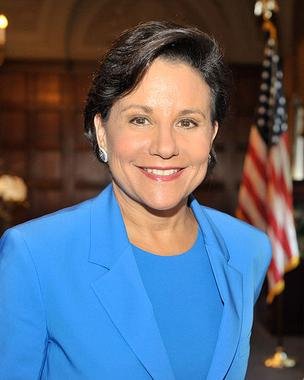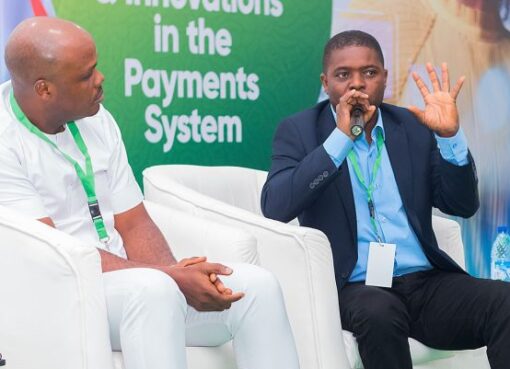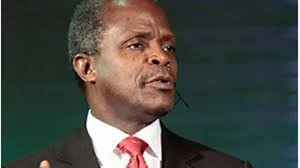By Alltimepost.com
United States Secretary of Commerce, Penny Pritzker told the world at the Advanced Energy Economy (AEE) Annual Dinner on Wednesday that “climate change is real.”
AEE is a national association of private sector leaders who are committed to making the global energy system more secure, clean, and affordable.
During her remarks, Pritzker discussed the commercial and environmental impact of the Paris climate agreement, the Obama Administration’s leadership in addressing climate change, and how the Commerce Department helps American businesses compete and succeed in the advanced energy sector globally.
Below is Full text of her speech:
Thank you, Tim. It is a pleasure to be here this evening with such an innovative and forward-thinking group. I want to thank Advanced Energy Economy for leading the charge to help the world transition to a cleaner future.
Before I continue, I want to officially settle the public debate on three very contentious issues. Number one: The earth is not flat. Yes, there are still pockets of debate about this. Number two. The moon landing was not faked. Neil Armstrong really did take that giant leap for mankind. And number three, the most important one of all: climate change is real.
As the Secretary of Commerce, I am fortunate to lead the National Oceanic and Atmospheric Administration, home to some of the world’s foremost authorities on climate science.
We know from their work that our climate is changing, from the top of the atmosphere to the depths of the oceans. And that change is caused primarily by the burning of fossil fuels.
The question is not whether to act, but how quickly. And I am proud to serve a President who has taken decisive action from Day One. A President who created a bold Climate Action Plan to address the challenges of our changing climate.
Under his leadership, we now have the highest fuel economy standards in history – doubling the efficiency of our cars and trucks by 2030 standards that are supported by an industry which is selling more American-made cars than ever before.
Thanks to the Administration’s work with Congress – and your advocacy – tax credits for wind and solar deployment have been extended for the next five years.
And the President’s Clean Power Plan should not only reduce carbon dioxide emissions by 32 percent over the next 15 years, but also save consumers money. Now that is real leadership.
During President Obama’s time in office, we have seen more changes to how the world consumes, produces, and transmits electricity than at any time since Thomas Edison invented the light bulb.
We are seeing more hybrids, more natural gas buses and more electric vehicles, not only on the DC Beltway, but around the country.
Solar generation has increased 20-fold. Wind power production has tripled. And last year, our country attracted $50 billion worth of clean energy investments.
These advances have created new industries, new supply chains, new companies in communities across America – and more jobs.
We are demonstrating that with the right policies we can protect the environment, we can improve public health; and simultaneously we can grow our economy.
In fact, I’m confident that our transition to an advanced energy economy will happen even faster than many suggest.
Let me tell you why: first, the market for advanced energy technologies is large, and it’s growing. I understand your Market Report estimates last year’s global Advanced Energy market at $1.4 Trillion.
And in Paris last December, the United States and every other nation in the world committed to reducing greenhouse gas emissions. The world made clear: clean energy technologies are here to stay.
With this agreement, the sheer scale and volume of the potential market is staggering. The world will need to invest $13.5 trillion to meet the commitments made by nations in Paris. This is an enormous opportunity for American businesses.
Second, consumers are increasingly demanding products that are sustainably produced; and cost effective. Across the country, solar panels are being deployed on rooftops faster than ever, because it is now cheaper than ever.
Third, as Secretary of Commerce, I have met with more than 2,000 CEOs. Businesses of all kinds, both large and small, are investing in advanced energy technologies.
Microsoft is not only becoming carbon neutral at all its data centers, it will be using 100 percent renewable energy across its operations. Tim’s company, EnerNOC, is proving that demand response technologies can save money for consumers and industry alike.
And even small companies are switching to LED lighting and improved manufacturing processes. Companies like American Standard Circuits – an Illinois-based company, have cut electricity costs and reduced carbon emissions, making them more competitive than ever.
These developments demonstrate that sustainability is the new normal. Bottom line, the transition to an advanced energy economy is not just a moral responsibility to our planet and future generations today, it is good business.
Now, together, we need to do more by going even bigger, faster and more global. The United States is not alone in undergoing an energy transformation. We are competing with other countries for the investment dollars of the future.
As America’s innovation agency, the Department of Commerce is working in three critical ways to speed our country’s transition and ensure that our people benefit from the entrepreneurship and global leadership of companies like yours.
Through our National Institute of Standards and Technology, we are leading the development of interoperability standards, which are critical to building a smart grid where networks, wires, and devices all speak the same language – from hardware to software.
Through this work, consumers are able to choose their energy sources, control how much power they use, and at what cost. And utilities are able to mix and manage supplies of solar, wind, and other renewable energy sources to better respond to changing demand.
Through our International Trade Administration, we are shaping the policy environment to allow your companies to compete fairly in markets across the world.
Our industry experts are working with the White House to negotiate an Environmental Goods Agreement that will reduce tariffs on climate friendly technologies.
Our ExportTech Program is teaching small-and-medium sized enterprises to export for the first time. Graduates of the program are averaging half a million dollars in increased sales, and saving more than $90,000 in the process.
We are also connecting your businesses to opportunities overseas. In the last year, the seven clean energy trade missions led by ITA have introduced hundreds of U.S. exporters to foreign buyers.
Last April, I led a trade mission of 24 American clean energy companies to China that has already led to a number of new business deals.
Finally, through NOAA, we are making sure that new facilities that harness the power of the sun, the wind, and ocean waves are sited in the most strategic locations. For example, our team provides forecasts to help predict wind speeds and solar insolation.
This information can be used by project developers to make their new installations attractive to investors. For those in this room that produce or transmit electricity, you use NOAA’s weather and climate data to make informed business decisions every day.
Bottom line, our Department is committed to supporting the growth of the advanced energy sector. But to do so, we need your input on a continual basis.
We have a number of formal and informal mechanisms to gather your feedback. I recently met with my Renewable Energy and Energy Efficiency Advisory Committee for their recommendations.
Our team also routinely hears informally from companies through our over one hundred U.S. Export Assistance Centers around the country.
These USEACs help companies start exporting or increase their sales abroad. We welcome your feedback so that we can position our programs to better help you capitalize on every opportunity.
Each of you in this room tonight is a key player in a great 21st century transformation. A transformation like the one America experienced more than 100 years ago, when Henry Ford reimagined the automobile and created a better, cheaper “motorcar for the great multitude.”
The Model T completely altered the lives of millions of Americans. What the Model T did for transportation, together we can do for the advanced energy economy.
The 21st century is still in its infancy. No one can predict the next technological breakthrough. But I can predict that the leaders in this room will create many of the technologies that the world will need to address the fundamental challenge of climate change. Thank you.







Nosakhare Okunmwendia Eseimude liked this on Facebook.